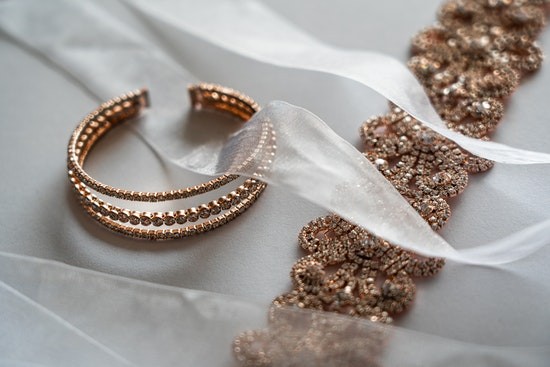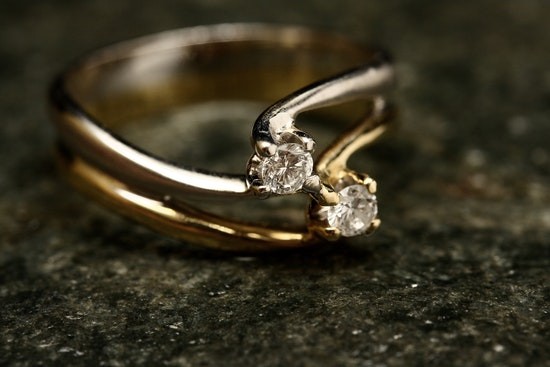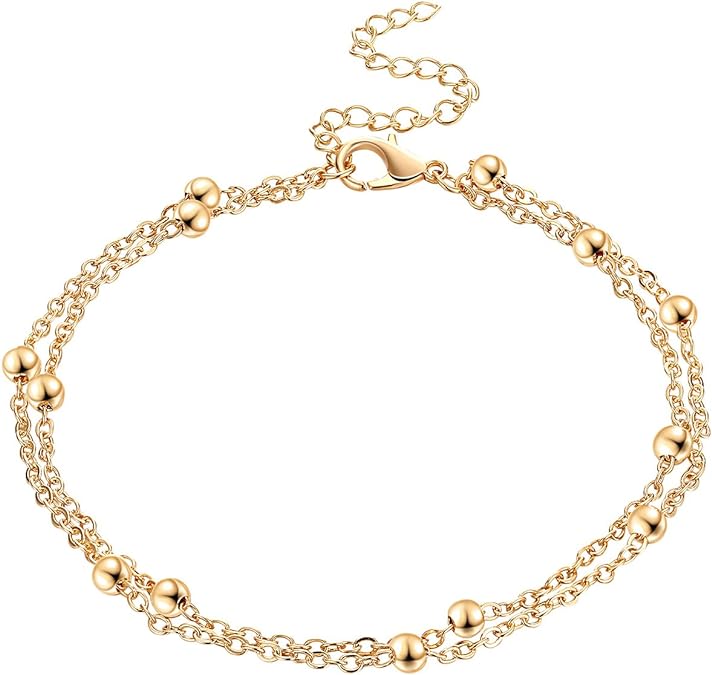Alloy jewelry is very popular with the general masses because of its apparent low-cost price compared to pure precious metals. As a result, you might be tempted to avail one or a few of them for yourself but unsure of its quality and safety since it was made from several metallic elements. If this is your concern, then this article is just for you! In today’s topic, I will provide you answers and help you ease your mind regarding jewelry made from metal alloys. So without further ado, let’s begin…

Before I discuss the specifications of alloy jewelry and its potential advantages and disadvantages, I believe that it’s essential to explain first what is “alloy.” Basically, when we hear the term metal alloy, it refers to the combination of several metals. Some of the common metals used include gold, silver, copper, and steel. In fact, the word “alloy” literary mean mixtures. And the purpose of admixing these metallic elements is to strengthen the jewelry and more resistant to corrosion and depreciation.
With this being said—alloy jewelry is a general term for accessories that are composed of several metallic compounds. Aside from their apparent aesthetic, is alloy jewelry good quality? And how long does alloy jewelry last? Alloy jewelry is strong and highly durable that could last for generations. The metal is also scratch-resistant and can retain its color and physical characteristic even when the item is exposed to extreme conditions.
Each metal has its own strengths and weaknesses, and combining them with other metals compensates for their flaw. However, it doesn’t mean you can combine all the elements in just one bowl. It doesn’t work that way. By doing so, you’re only making the compound weaker and prone to breakage instead of strengthening the bond. There are several mixtures that jewelry makers follow to guarantee the quality of the alloy jewelry. Let’s take a look at each of them—

Gold Alloys
The apparent luxurious aesthetic of gold alloys makes them the most common and popular choice of jewelry. Gold itself is sufficient to make one accessory. However, pure gold is rare, soft, and very expensive, making them an infrequent choice by jewelry makers. When gold is combined with specific metals, it becomes harder and malleable. For example, an 18K gold contains 75% gold, and the other 25% is silver, copper, and cobalt.

Silver Alloys
Silver alloy is another popular option for many jewelry enthusiasts. For one thing, it’s less expensive but provides the same quality as a gold alloy accessory. Probably the most common silver alloy we see in the market is the Sterling silver that is used in necklaces, jewelry bodies, bracelets, rings, and belt buckets. It basically combines 92.5% of silver with 7.5% of copper. As a result, it makes them more reliable and resistant to corrosion. Other jewelry that uses silver alloys includes Mexican silver, Britannica silver, and Vermeil.

Platinum Alloys
Jewelry made from alloy is primarily known for its hypoallergenic properties. Therefore, they are the best option for individuals with sensitive skin and allergic reactions to metallic materials. In addition, it is very durable and can resist wear and tear even if it’s worn daily and exposed to harsh weathering consistently. A common admixture of platinum in the United States combines 950 parts of platinum and 50 parts of iridium.
As mentioned, alloy jewelry contains several metallic compounds which may trigger irritants. This is especially for people with health conditions referred to as metal hypersensitivity. With this being said—some of the important questions you may have, is alloy jewelry safe? Is alloy jewelry hypoallergenic? Or, in general, is alloy jewelry good or bad for your overall wellbeing?
Honestly, forms of metals like nickel, copper, silver, mercury, stainless steel, and cobalt may not suit all skin types. The report says that these metals are the common culprit in particular skin conditions that could lead to allergic reactions upon contact with the skin. For example, some metal like copper may turn your skin green. To resolve this issue, you have to be aware of your triggers. Once you determine which metal causes allergic reactions, you need to be selective of the jewelry you buy. If you’re not sure which metal leads to allergic reactions, it would be best to consult your local dermatologist or doctor to give you professional advice.
Since each major metal alloy has its own strengths and weaknesses, I have prepared a categorized list to provide more reliable information about them.
Gold Alloys
The pros of gold alloys are as follows—
·Highly durable
·It is more aesthetically pleasing compared to silver alloys and platinum alloys
·Extremely resistant to rust and discoloration
·It can be a good investment because the price of gold goes up over time
·Highly malleable, which makes them very easy to work with and carve intricate designs
The cons of gold alloys are as follows—
·It may not be recommended for daily use because its malleable nature may lead to scratches upon contact with rough surfaces
·Expensive
·Since gold alloy has nickel, it may not be suitable for all skin types
Silver Alloys
The pros of silver alloys are as follows—
·Although not as luxurious as gold, it has a unique luster that creates a stunning glamour for the wearer
·Budget-friendly
·It has a durability that can last for centuries
The cons of silver alloys are as follows—
·Discoloration may occur if not properly maintained
·One of its common metal alloys is copper, which may trigger allergens
Platinum Alloys
The pros of platinum alloys are as follows-
·It perfectly complements diamonds
·The metal plating is dense, which makes them durable and very strong
·Recommended for daily use because it is extremely resistant to scratches and discoloration
·It may be hypoallergenic in a particular skin type
The cons of platinum alloys are as follows—
The only con of platinum alloys is that the price may be a little out of reach for people who are under a tight budget
A common concern for most jewelry owners is its durability—does alloy rust? Or does alloy tarnish? It’s a reasonable question to consider because most alloy jewelry is expensive. Therefore, prolonging their usability is highly important to them. Any type of alloy jewelry would last for generations. In fact, some of the metal alloys we see in ancient archeological sites are metal admixtures we still use today. Despite many centuries underground, they’re still recognizable in some sense.
This may be the case—proper care for the accessory should still be exercised to maintain its beauty. As mentioned in the previous section, silver alloys are prone to discoloration. On the other hand, you may have to refrain from using your gold on a daily basis because it is not as scratch-resistant compared to platinum and silver.
You don’t have to necessarily worry if you notice your skin turning greenish every time you wear and take off your metal accessory. It’s a normal occurrence, especially in cheap and substandard jewelry with copper plating or alloys. It usually happens when the item is exposed to acids that cause them to oxidize quickly, producing dark discoloration and leaving a green residue on your skin. Generally, it doesn’t pose any serious threat to the wearer. But again, it is best to avoid them especially if allergic reactions occur.
As mentioned, there are specific forms of metal that are hypoallergenic. If you have a skin condition that triggers allergens when you come in contact with a type of metal, then it would be best to refrain from using them. However, take note that not all metals are the same, as explained earlier. If one metal does causes irritation, the solution is to find suitable metal alloy jewelry. The most hypoallergenic metal alloy around is platinum jewelry. However, it is advisable to seek professional consultation to get an accurate reading of your skin condition.
Maintaining your metal alloy jewelry is relatively straightforward. Follow these simple steps to keep your accessory shiny and hygienic—
Grease Removal
·Soak the entire cotton cloth in a vinegar
·Cover or envelop the cotton cloth onto to accessory
·Let it sit on the grease spot for about 15 minutes
·Rinse off the vinegar from the accessory with tap water
Routine Maintenance
·Mix a half cup of warm water with a half cup of lemon juice
·Put the mixture into a spray bottle
·Get a clean cotton cloth and spray the solution on it
·Allow it to sit there for about 10 minutes
·Rinse off the solution with tap water
Rust Removal
·Mix baking soda with water and vinegar
·Mix the solution until a paste consistency is achieved
·Apply them to the rusted area and let it sit there for about an hour
·Rinse off the paste from the alloy jewelry using a tap water
Learn how to clean other jewelry with simple steps.
Here are some of the commonly asked questions about alloy jewelry—
Each metal element has their strength and weaknesses. Combining them with other metals improves their overall characteristic, which makes them stronger and more durable.
Pure metals tarnish when it is exposed to harsh environmental conditions. But their structure improves when it is admixed with other metals. However, this may not be the case in alloy jewelry made from copper and nickel. Therefore, expect corrosion to occur if the jewelry is not properly managed or in acidic conditions. Find jewelry metals that don't tarnish ever.
The greenish residue you’ll find after taking off the jewelry is a common occurrence, especially in cheap jewelry made from copper or brass. In general, you have nothing to worry about health-wise.